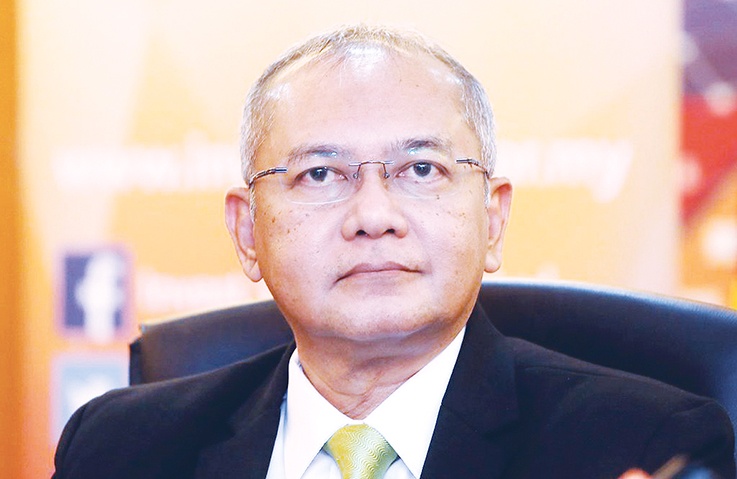
THE adoption of electric vehicles (EV) in Malaysia is still undeniably low.
Some attribute this to a lack of charging facilities, while others argue that it is too expensive and that the green technology vehicle is quite broad.
Currently, the prices of plug-in hybrid EVs (PHEVs) and EVs are expensive and there are no local associates.
In August last year, the Dewan Negara was told that the number of EVs registered up to the end of March 2019 was at a paltry 5,403 units.
According to the Transport Ministry, there are 326 open-to-public EV charging stations and some privately owned BMW and Mercedes-Benz charging stations, albeit just a few, in the country.
Contrarily, China has already led the race in EV adoption with over two million vehicles on the road in the mainland, while Europe trails behind with about 1.3 million.
Nevertheless, Malaysia has set a strong footing in this initiative.
It is indeed a long journey for the country to realise this vision but the Malaysian Green Technology and Climate Change Centre (MGTC) believed that initiatives must be carried out continuously to ensure its success.
MGTC CEO Shamsul Bahar Mohd Nor (picture) said while EV is a technology presently being adopted worldwide, hydrogen will be the future power for vehicles which will accommodate EV’s existence.
Starting with EVs
“Hydrogen technology can complement the EV battery.
“So, while embarking on the EV initiative, we need to also tap into the hydrogen vehicle technology. This will be the future,” he told The Malaysian Reserve in a recent interview.
Hydrogen fuel-cell cars are powered by an electric motor, hence they will produce the electricity themselves.
Unlike in fully electric or plug-in hybrid vehicles, the vehicle does not get its power from a built-in battery that must be charged from an external power source.
Instead, hydrogen cars effectively have their own efficient power plant on board — the fuel cell.
“So, we can start with EVs and later instal the fuel cell. Then, the hydrogen gas can be used as the motive power to the vehicle,” he added.
Shamsul Bahar said with one charge, the hydrogen car can last four times longer compared to a battery-powered vehicle. Technologies pertaining to EV (typically batteries) are improving tremendously.
The range of EVs now can exceed 300km and charging time can be reduced significantly with the use of a rapid or fast charger.
Adopting Hydrogen Ecosystem
Four years ago, Japan, the leader in hydrogen technology, decided that there would be some 40,000 hydrogen fuel-cell vehicles on their roads by 2020, along with 160 fuelling stations and 1.4 million residential fuel cells.
The country planned to use 100 hydrogen buses for Olympics 2020, which has been postponed to next year due to the Covid-19 crisis.
“We need to move fast as we have the resources for this. Other countries in the region are already producing hydrogen for export,” Shamsul Bahar said.
In February, Brunei reportedly shipped 4.7 tonnes of hydrogen to Japan meant to be used for the Olympics. The multibillion-dollar initiative was also the first global hydrogen supply project.
The vision to have an ecosystem in Malaysia to support hydrogen adoption may seem far away now, but Shamsul Bahar said it is never too late for us to catch up, provided there is a proper plan.
“We must still continue with the EV move because it is like a transition before we can start on building hydrogen gas mobility,” he said.
To ensure a smooth transition for the master plan, Shamsul Bahar said MGTC has already engaged with the Ministry of Science, Technology and Innovation, while looking for interested parties who are willing to carry out this project.
Low-Carbon Framework
Simultaneously, MGTC, together with the Ministry of Environment and Water, has prepared the Low Carbon Mobility Blueprint document, which was developed to be in line with Thrust 4 of the National Transport Policy 2019-2030.
This document is now going through its final stages of refinement and will be tabled for government adoption soon.
Among others, MGTC is expected to deploy hundreds of electric buses to be used at some municipal councils in the country within the next one year.
“However, as we know for an automotive sector to succeed, it needs an economy of scale. We hope that as more councils use EVs, it will create a better demand and further confidence among the public.
“Then, we aim for these buses to be locally assembled here as we do have the capability and facilities to do so. We just need the chassis to be transported. This will save production costs.
“If the adoption is good, I believe the ecosystem will also improve. Then, we would see the production and usage of EVs increasing along the line,” Shamsul Bahar explained.
The demand for EVs in Malaysia has been on the rise since the Mitsubishi i-MiEV — the country’s first registered electric car — made its debut nearly a decade ago. The amount of listed EVs has since increased from an estimated 100 units in 2013.
There are also several electric cars officially sold in Malaysia, among others the BMW i3s and the Nissan Leaf. Both are selling at RM278,800 and RM188,888 respectively.
At one point, the Renault Zoe was officially sold for RM145,888, but it is no longer listed.
Source : The Malaysian Reserve

